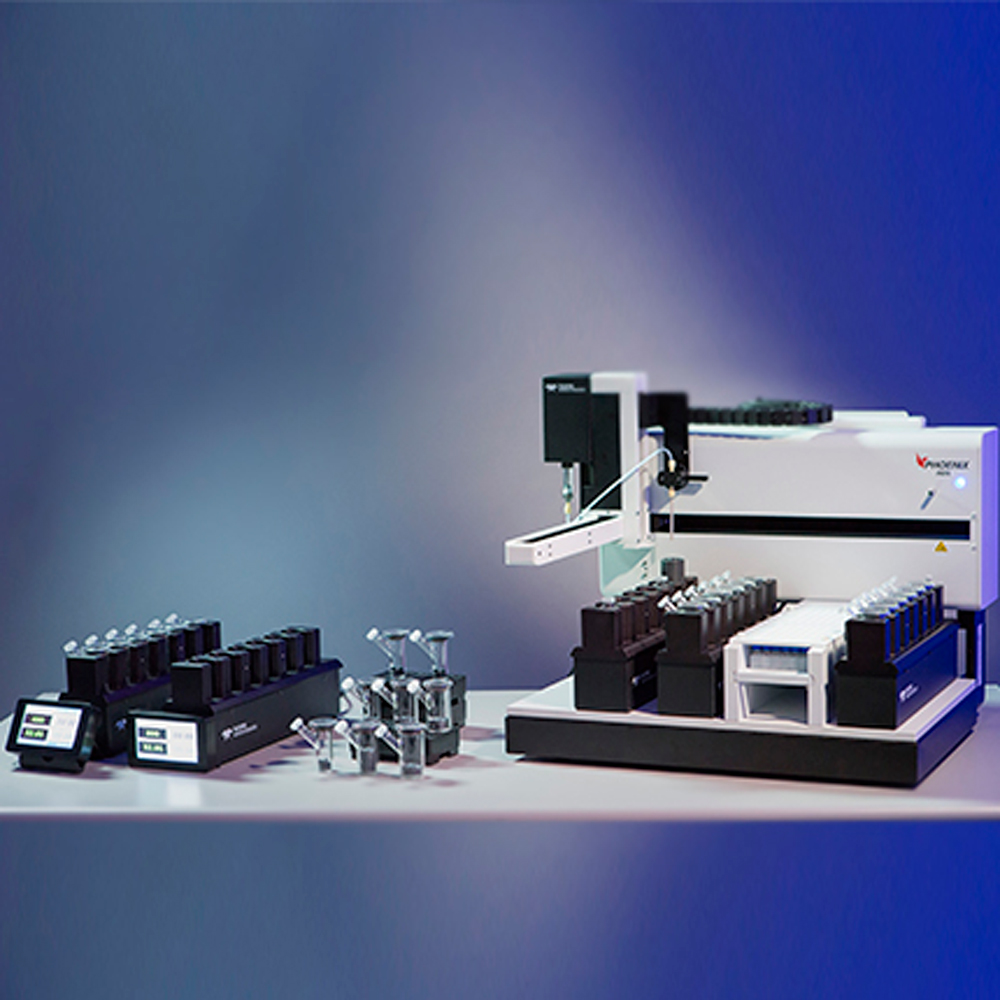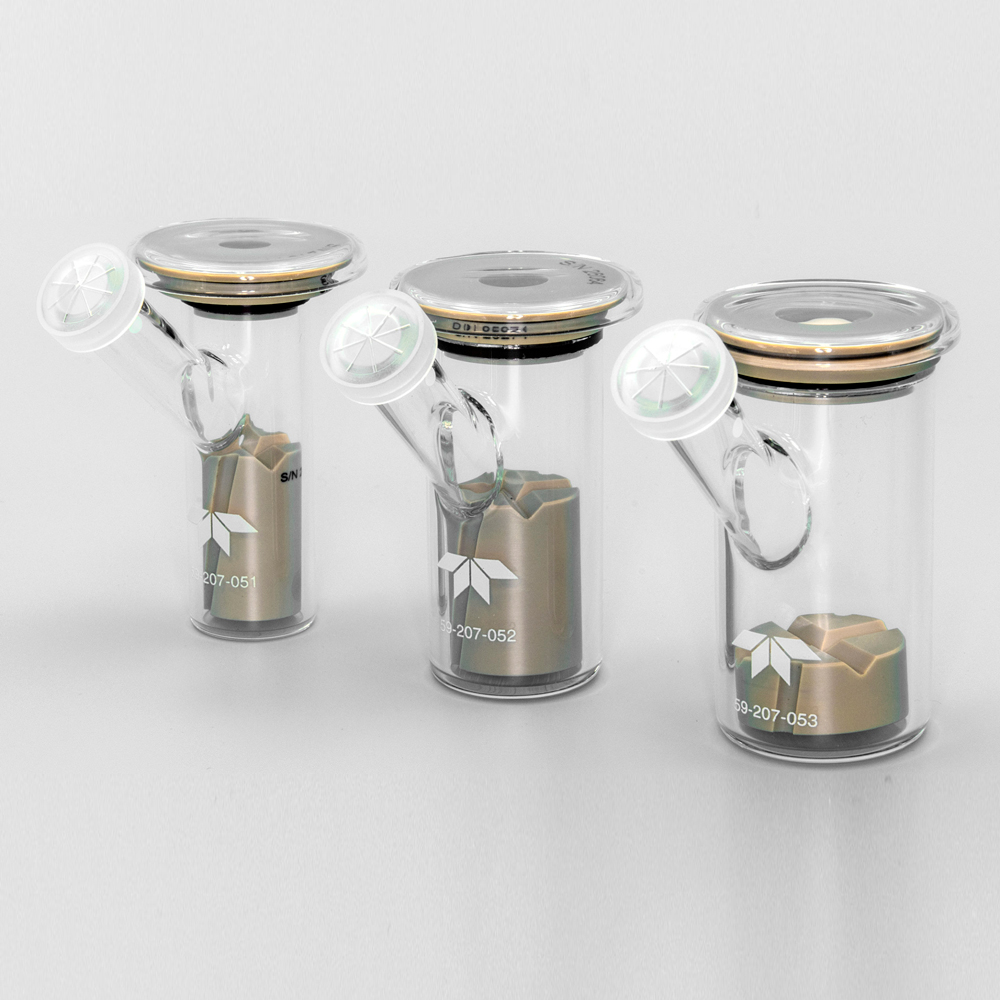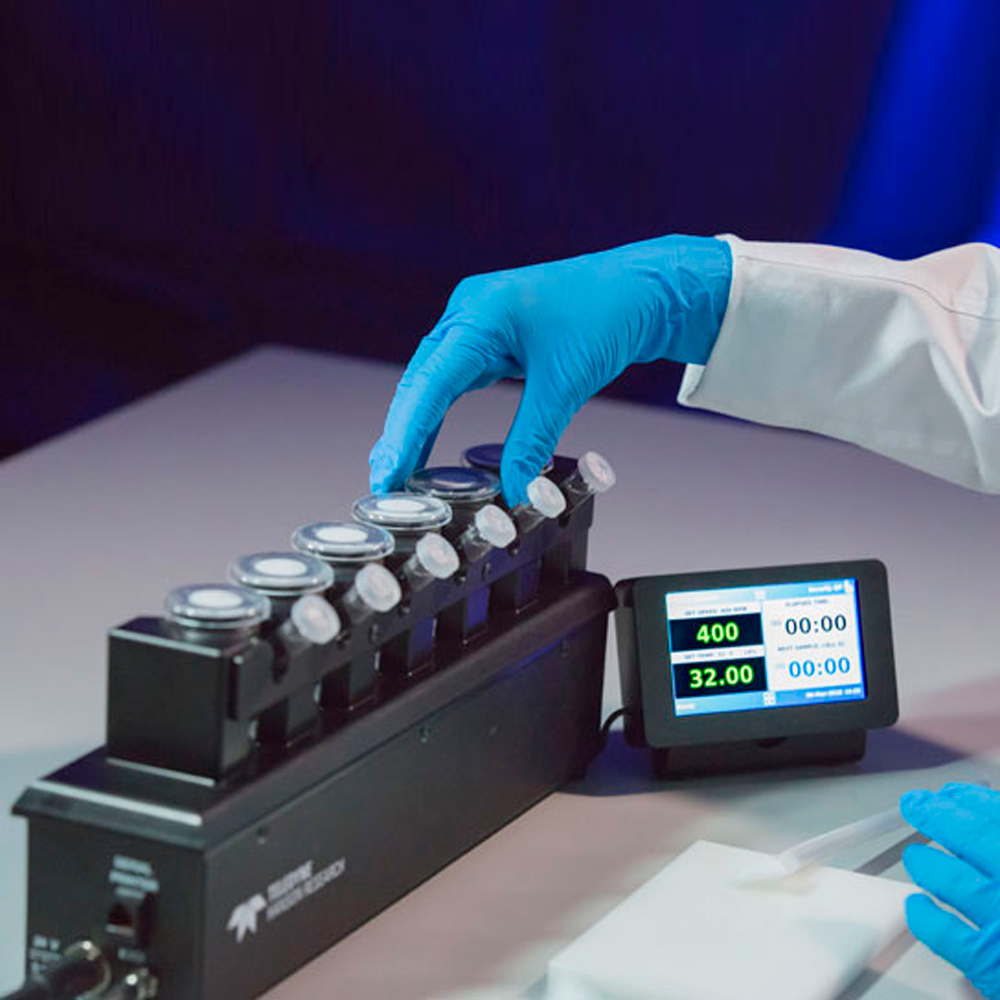PHOENIX DRY HEAT SYSTEMS
The new Phoenix™ dry heat diffusion testing systems from Teledyne Hanson Research provide manual and automated instruments that are more compact, easier to use, and more precise than conventional systems.
The Phoenix family of products includes an advanced cell design, a six‐cell manual sampling system with a compact footprint, and an automated sampling system capable of testing up to 24 diffusion cells at once. The Phoenix DB-6 and Phoenix RDS systems and their components are protected under U.S. patent 10,753,841.

PHOENIX™ DRY HEAT DIFFUSION CELLS
The new Phoenix™ Dry Heat Diffusion Cell is designed for precision, versatility, and ease‐of‐use in diffusion‐testing labs. In manual sampling applications, the wide opening in the arm accommodates standard pipette tips. For maximum versatility, lab analysts can choose from small, medium, or large borosilicate glass cells and, using special volume‐adjustment mixer/inserts, can obtain receptor media volumes from 10 mL to 30 mL. An array of cell cap kits accommodates all 25 mm membranes, orifice diameters from 9 mm to 20 mm, and dosage volumes from 0.25 mL to 6.2 mL. A convenient fill mark on the sampling arm indicates the cell is filled. Phoenix cells are easily inserted and removed from the heating block. Cell preparation, including dosage application, bubble detection, and bubble removal, is fast and easy.

PHOENIX DB‐6 MANUAL DIFFUSION SYSTEMS
The Phoenix DB‐6 dry heat diffusion system provides a compact footprint for six‐cell testing. Precision heating and stirring systems contained within the block makes the system fully portable, able to be placed in any position the analyst chooses for faster, easier cell preparation.
With precise control of mixing speeds from 200 rpm to 900 rpm, and temperatures from 25 °C to 40 °C, the system meets or exceeds USP <1724> specifications. An advanced color touch screen running on an embedded single‐board computer with a built‐in SQL database and real‐time clock provides advanced monitoring, diagnostic, and reporting capabilities, user‐friendly programming and navigation, storage for up to 100 test protocols, and configurable security for up to 50 users. The large, bright display allows key parameters to be seen from a distance, including speed, temperature, elapsed time, and time to next sample.
When sampling is due, the system alerts the operator with the cell position, a countdown timer, and an audible beep. Test reports are delivered via the Teledyne Hanson serial validation printer.

PHOENIX RDS AUTOMATED DIFFUSION TESTING
The Phoenix RDS Robotic Diffusion Station refines the art of diffusion testing by incorporating Teledyne Hanson’s breakthroughs in four areas: diffusion cell design; heating and stirring; automated sampling and collection; and computerized control. The dry heat diffusion cell at the heart of the system delivers significantly improved test results as compared to traditional water‐jacketed, displacement‐sampling systems. The precision heating and stirring components built into each of the six‐cell blocks provide outstanding control of temperature and speed. Automatic sampling and collection are accomplished through a syringe driven probe on an XYZ platform controlled by Teledyne Hanson’s sophisticated Diffusion Master software. The automated system mimics the way sampling, collection, and media replace are performed by laboratory analysts when working manually, while simultaneously reducing the potential for variances due to procedural inconsistencies. The modular design of the six‐cell dry‐heat block allows laboratories to move smoothly between manual and automated methods when scaling to higher numbers of experiments.

BUILD YOUR OWN PHOENIX DIFFUSION TESTING SYSTEM
The Build Your Own System tool is an interactive way to explore the capabilities of Teledyne Hanson’s diffusion-cell-testing platform known as Phoenix Dry Heat Systems. The configurator will automatically guide you through the steps required to build your own diffusion cell testing system. It will ask you to choose between manual or automated sampling; various cell sizes and mixer-insert combinations to achieve specific receptor media volumes; choices of cell cap kits having different donor chamber volumes and membrane exposed areas (orifice diameters); and so on. It is recommended to first review the configurator instructions. If you have already reviewed the instructions, you can go directly to the “Build Your Own Phoenix Diffusion Testing System” configurator page.

